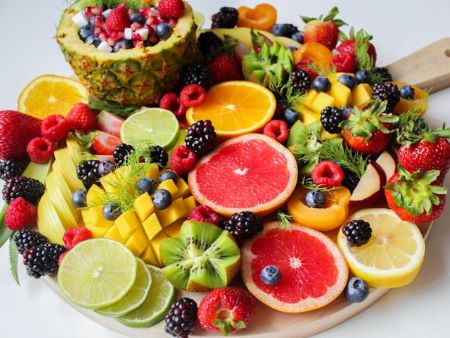6 Simple Diet Tweaks
While there are many factors that can contribute to pelvic floor issues like leaks, incontinence, and prolapse such as pregnancy, childbirth, ageing, and certain medical conditions (see What Causes Pelvic Floor Issues?), diet is often overlooked as a potential contributor.
However, the foods we eat can have a significant impact on the health of our pelvic floor muscles.
What we eat contributes both to the tone of our pelvic floor muscles and to the stress they might be under.
There are a number of ways that we can adjust our diet to optimise pelvic floor health.

Firstly we’re going to look at what we can eat (and avoid) to support good muscle tone.
- Water (not strictly a food): It can be tempting to limit your fluid intake when you are trying to manage incontinence symptoms but adequate hydration is important for maintaining muscle tone and flexibility. Aim to drink at least 8 cups of water per day (2 litres), and more if you are physically active or live in a hot climate.
- Eat enough protein. Protein is responsible for growth and repair and is essential for muscle health. The recommended daily allowance of protein for an average woman is 46g (0.8g of protein per kg of bodyweight per day). Aim to include lean sources of protein such as chicken, fish, tofu, and legumes in your diet. A good rule of thumb is to include a portion of protein with every meal – a portion is roughly the size of the palm of your hand.
- Avoid excessive sugar and processed foods. A diet high in sugar and processed foods can contribute to inflammation and oxidative stress, which can lead to muscle damage. Aim to limit your intake of these types of foods and focus on whole, nutrient-dense foods instead.

Now, let’s look at ways our diet can help take the pressure off our pelvic floor muscles.
- Avoid constipation by increasing your fibre intake. Avoiding constipation and pooing properly (download our FREE guide here) is a great way to support your pelvic floor health daily. Eating fibre rich foods at every meal such as fruits, vegetables, wholegrains and beans (legumes) will ensure you’re getting enough fibre to keep your digestion moving and make healthy poos that are easy to pass. Kiwis, pears and prunes are all excellent for getting things moving – bonus points for eating the skin.
- Maintain a healthy weight. Obesity is a risk factor for pelvic floor issues (see causes of pelvic floor issues) as it increases the downward pressure on the pelvic floor muscles meaning they have to work harder to support the organs above them and stop leaks. A balanced diet and regular exercise can help manage excess weight. Avoid impact exercises like running and jumping to reduce pressure on the pelvic floor.
- Avoid bladder irritating foods. Spicy and acidic foods like citrus fruits and tomatoes can irritate the bladder and increase urgency and frequency. Keep an eye on how your body reacts when you eat these foods to see if you want to cut down or cut them out.
The health of our pelvic floor muscles is influenced by many factors, including diet.

By making adjustments to our diet, we can support the health of our pelvic floor muscles and reduce the risk of pelvic floor issues, while significantly improving our overall health.
If you are experiencing pelvic floor issues, it’s always a good idea to consult with a healthcare provider or pelvic floor/women’s health physiotherapist for personalised advice and treatment.
For more actionable content like this including How To videos and bite sized advice, follow us on Instagram (@sheela.ie) and YouTube (@sheelawomen).
Start your pelvic floor health journey TODAY.
Main – Photo by Kelly Visel on Unsplash



